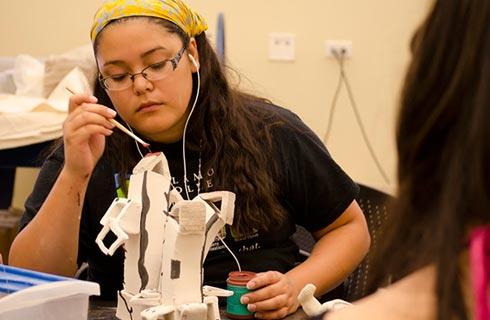经济学(荣誉)合作文学士学位
Bachelor of Arts in Economics (Honours) Co-Op

学历文凭
Bachelor Degree with Honours

专业院系
Economics

开学时间

课程时长

课程学费

国际学生入学条件
International Secondary School Student General admission requirements:
Senior Secondary school credential appropriate for entry to university in your home country;
Academically rigorous grade 12 year
Prerequisites required for your program must be taken at the Grade 12 university-preparatory level (or equivalent) and are the highest level of secondary studies available in your final year of secondary school.
You may be required to submit course outlines so Admissions can determine if a prerequisite meets the rigorous academic standard required for admissibility.
Minimum B- average (higher for some programs
International Out-of-Province Secondary School Students General admission requirements
Secondary school diploma;
Grade 12 courses at the number and level specified for your province (see below);
A minimum average of 70% (many programs require a higher average)
IDP—雅思考试联合主办方

雅思考试总分
6.5
了解更多
雅思考试指南
- 雅思总分:6.5
- 托福网考总分:88
- 托福笔试总分:160
- 其他语言考试:PTE - 58
CRICOS代码:
申请截止日期: 请与IDP顾问联系以获取详细信息。
课程简介
经济学合作社计划将学术和工作条件结合在一起,为期四个半学期。在开始第一次工作之前,学生在学术环境中学习了两年的经济学功能领域。除了当前以学术学习形式提供的课程费用外,还向学生收取年度管理费(请参阅“费用表”)。研究“选择科学”,了解如何才能最好地利用有限的资源来满足个人和社会的需求。您将研究个人消费者如何选择花费时间和金钱,以及生产者如何预测和响应消费者需求。您将从银行系统,失业,政府债务和税收到国际贸易和汇率以及自然资源的使用和保护,对整个经济有所了解。
Economics is divided into two parts: Microeconomics and Macroeconomics. Microeconomics focuses on the operation of the market system under alternative scenarios about competition. It studies the economic decisions of individuals, households and firms and shows how those decisions interact to produce market outcomes. Microeconomics then examines the efficiency of the market outcomes and the extent to which they benefit society. Macroeconomics examines the functioning of the broader economy and some of its key sectors. Its main focus is on economic performance as measured by employment, unemployment, and the gap between aggregate economic activity and its potential. Through this analysis, macroeconomics identifies factors that help an economy achieve sustained increases in its standard of living. Macroeconomics also pays special attention to monetary phenomena, inflation, interest rates, and the exchange rate.The analytical tools developed in micro and macro economics are applied to many different subject areas within economics such as industrial organization, labour economics, international trade, economic development, taxation, and government expenditure. Other fields, such as money and banking and international payments, apply economic tools to the study of financial markets. The analyses yield insights and predictions that are used to develop public policy on a wide range of issues.
Economics is divided into two parts: Microeconomics and Macroeconomics. Microeconomics focuses on the operation of the market system under alternative scenarios about competition. It studies the economic decisions of individuals, households and firms and shows how those decisions interact to produce market outcomes. Microeconomics then examines the efficiency of the market outcomes and the extent to which they benefit society. Macroeconomics examines the functioning of the broader economy and some of its key sectors. Its main focus is on economic performance as measured by employment, unemployment, and the gap between aggregate economic activity and its potential. Through this analysis, macroeconomics identifies factors that help an economy achieve sustained increases in its standard of living. Macroeconomics also pays special attention to monetary phenomena, inflation, interest rates, and the exchange rate.The analytical tools developed in micro and macro economics are applied to many different subject areas within economics such as industrial organization, labour economics, international trade, economic development, taxation, and government expenditure. Other fields, such as money and banking and international payments, apply economic tools to the study of financial markets. The analyses yield insights and predictions that are used to develop public policy on a wide range of issues.
相关申请
 预科
预科 奖学金
奖学金 实习机会
实习机会 在校学习
在校学习 跨境学习
跨境学习 校园授课-线上开始
校园授课-线上开始 在线/远程学习
在线/远程学习
关于布鲁克大学

布鲁克大学位于加拿大生机勃勃的圣凯瑟琳斯市,是一所有着近60年教育历史、高瞻远瞩的公立研究型院校,为学生提供丰富的学术知识和大学生活。布鲁克大学开设有本科和研究生课程以及各种受到评鉴机构认可的职业培训课程。全校大约有1.9万名学生,其中约1.7万名是本科生。该校拥有加拿大第五大合作教育计划,还提供精彩的项目和实践学习机会。布鲁克大学拥有一个由大约2500名学生组成的充满活力的国际学生群体,他们代表世界各地的不同民族和文化,将各种观点和生活方式带到校园中来。布鲁克大学位于令人叹为观止的尼亚加拉地区,距离自然奇观尼亚加拉大瀑布只有几分钟路程,是加拿大仅有的几所位于联合国教科文组织生物圈保护区中的大学之一。该地区有许多值得探索的美丽的自然景观,一年四季都有精彩刺激的户外活动。布鲁克大学提供一系列出色的学生服务,注重学生身心健康,给予学生大量学习方面的支持和帮助。该校的心理健康服务连续三年在加拿大名列榜首,学生满意度也一直位居加拿大前三名。该校为学生提供大量经济资助选择,其中包括奖学金、助学金和政府资助计划。




















 加拿大
加拿大










